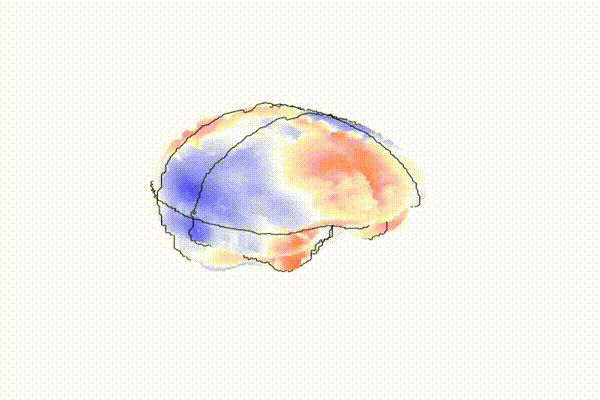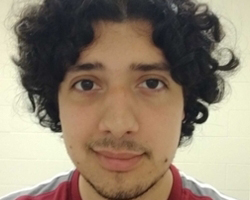New measurements shed light on brain deformation in head impact
Jordan Escarcega in Phil Bayly’s lab measured the frequencies at which brains vibrate

We may not think that nodding our head “yes” or “no” causes any motion in our brain, but it does. A team of researchers led by Washington University in St. Louis recently used a method to measure the frequencies of these internal movements to better understand brain mechanics and traumatic brain injury.
Jordan Escarcega, a doctoral student in the lab of Philip V. Bayly, the Lee Hunter Distinguished Professor and chair of the Department of Mechanical Engineering & Materials Science in the McKelvey School of Engineering, and a team of collaborators at McKelvey Engineering and the Henry M. Jackson Foundation for the Advancement of Military Medicine sought to learn what features of head movement affect the brain’s response to impact. Results of their work are published online in the Journal of Biomechanics Feb. 10, 2021.
Escarcega, a third-year doctoral student in mechanical engineering, used data sets of 19 patients who undertook tagged magnetic resonance imaging (MRI) experiments by collaborators at the Henry M. Jackson Foundation for the Advancement of Military Medicine. During the MRI, each patient’s head was moved in a slight “yes” or “no” motion, which caused a response in the brain.
Escarcega took the strain measurements provided by his collaborators and applied a method known as dynamic mode decomposition (DMD) to analyze that motion and response.
“Whenever you excite a system, such as a brain or a guitar string, depending on how complex the system is, there will be several different modes of oscillation,” Escarcega said. “Using DMD, we can extract all of the different modes, and this allowed us to determine which modes provide the highest contribution to the overall motion of the brain.”
When the head is rotated or impacted by a blow or trauma, a train of shear waves goes through the brain, just like the shear waves that cause ground motion and damage in earthquakes. These shear waves contain a combination of different frequencies, and some frequencies may cause more harm than others.
“We’re trying to determine which frequencies are the most dangerous and make the brain more vulnerable to deformation,” said Escarcega, who participated in the Washington University Summer Engineering Fellowship program while an undergraduate student at California State University Maritime Academy.
To test the method, the team compared results from computer simulations (using finite element analysis) and from a physical model (a gelatin “phantom”) subjected to the same rotation, which proved that it worked, before applying the method to the human MRI strain data.
Their results showed the highest contributing modes of oscillation occurred at around 7 Hz when the head is rotated to the “no” motion, and around 11 Hz when it was rotated in the “yes” motion in all of the subjects.
“These results are important for us to better understand how the brain responds to head impacts,” Escarcega said. “It also provides further quantitative data for computer models of brain mechanics and the development of protective headgear.”
Work in Bayly’s lab focuses on impact, vibration, wave motion and instability in mechanical and biomedical systems. He and his team are using MRI to study the brains of healthy, uninjured individuals of both sexes, in various age ranges, to create models of brain motion over the life span. Their goal is to enable the researchers to predict the chronic effects of repeated head impacts in both men and women.
Escarcega JD, Knutsen AK, Okamoto RJ, Pham DL, Bayly PV. Natural Oscillatory Modes of 3D Deformation of the Human Brain in Vivo. Journal of Biomechanics, online Feb. 10, 2021. https://doi.org/10.1016/j.jbiomech.2021.110259
This research was funded by the National Institutes of Health (R01NS055951 and U01NS112120) and the U.S. Department of Defense in the Center for Neuroscience and Regenerative Medicine.





